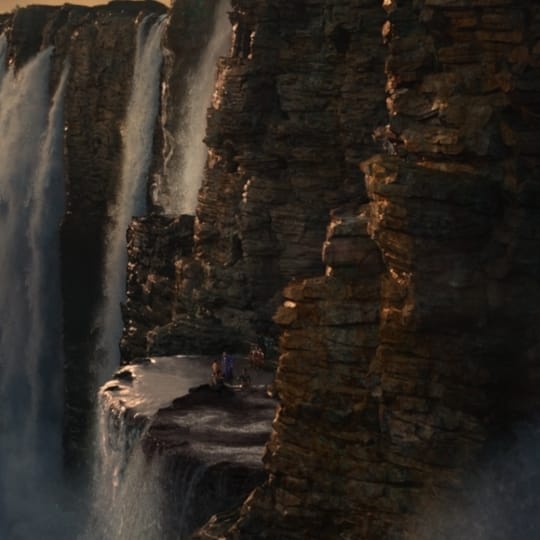For Black Panther's most climactic moments, ScanlineVFX turned to Flowline and V-Ray to simulate and render the perilous backdrop of Wakanda's Warrior Falls
Two key scenes in Marvel’s film Black Panther involve hero T’Challa claiming his right to the country’s throne in hand-to-hand combat in pools above vertiginous waterfalls. The shots were filmed in shallow pools on the set in Atlanta, then turned over to ScanlineVFX, known for its incredible fluid simulations and effects.
“We’re proud of how we were a big part of the creation of Wakanda,” explains Scanline Visual Effects Supervisor Bryan Grill. “Even though it’s a fictitious country, I think audiences worldwide enjoyed it so much that they almost thought, 'Well, if there is a real place like Wakanda, I would like to live there!'”
We spoke to Bryan, as well as CG Supervisor Ioan Boieriu and R&D Technical Director Lukas Lepicovsky, about the technical wizardry they used to create the effects for these now-legendary parts of the movie.
How did you get involved with Black Panther?
Bryan Grill
ScanlineVFX is known for executing very complicated water and destruction simulations. The environment of Warrior Falls fell right in Scanline’s wheelhouse. With Marvel’s blessing, we were given the opportunity to visualize and create the beautiful waterfalls and pools.
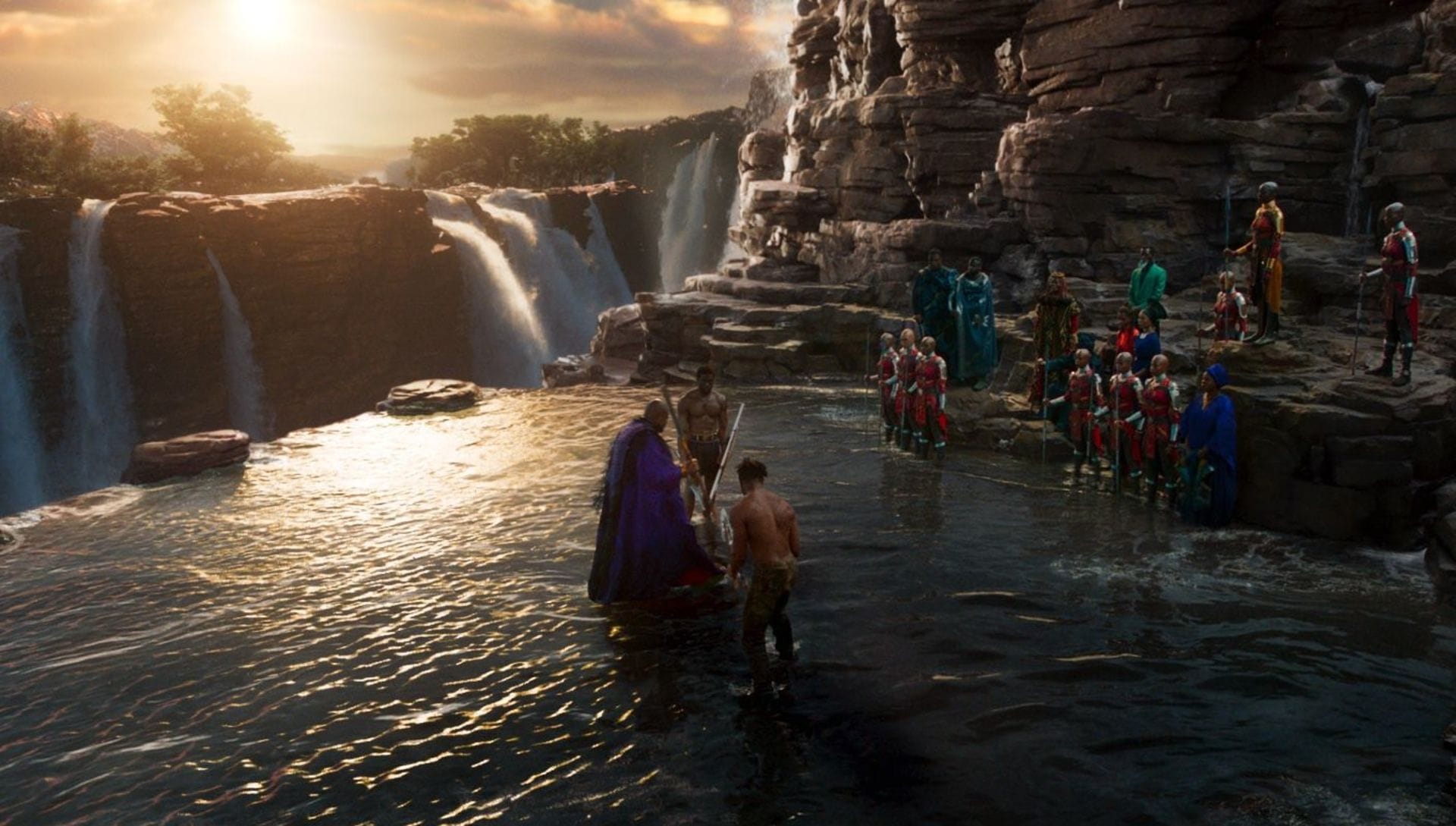
Could you talk us through the Warrior Falls sequences?
Bryan Grill
They were broken up into three parts.
The first was the beginning of the King’s Challenge ceremony, where the tribes are floating up the river on barges, singing and dancing on the way to the challenge pool. This took place in the upper part of the falls, which we based on the river structures of Victoria Falls in southern Africa.
The second was the King’s Challenge. This fight takes place on a very sunny mid-morning in the Warrior Falls environment. Royal heir T’Challa would be crowned king, but he’s challenged by M’Baku, leader of the Jabari tribe, they would fight surrounded by all the tribes.
The third part was the King’s Challenge B. In this fight Killmonger, who has a royal right to the throne, challenges T’Challa. This fight happens later in the day, with a more ominous cloudy setting.
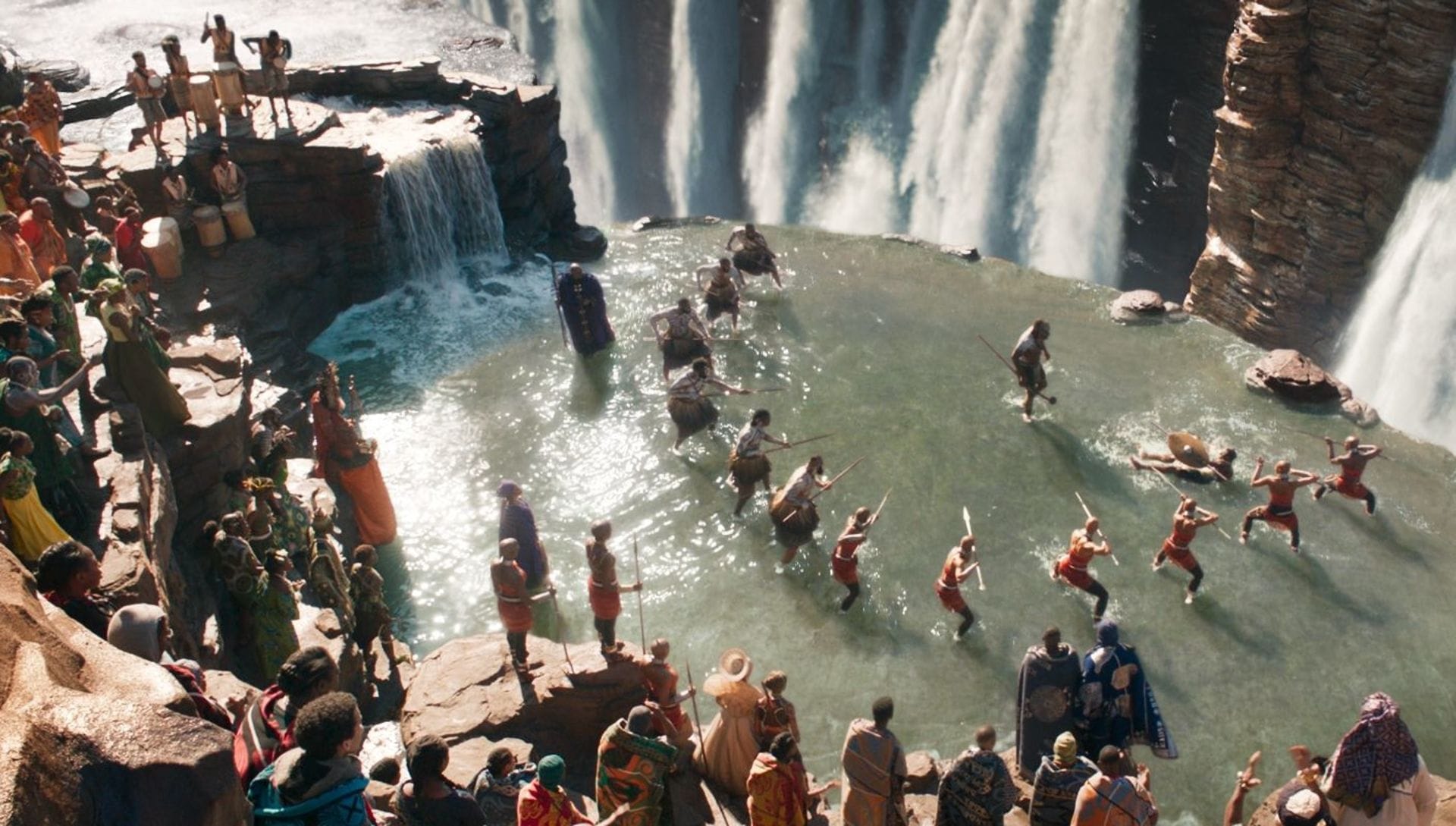
Director Ryan Coogler hadn’t worked on a VFX-heavy film before. How did he adjust to it?
Bryan Grill
Marvel's VFX Supervisor Geoffrey Baumann did a great job of educating and showing Ryan the process of working on a big visual effects movie for Marvel. He explained how to make the best creative decisions, and how long those ideas can be explored before time starts to run out. Together they created a wonderful working environment, making this movie very enjoyable to work on.
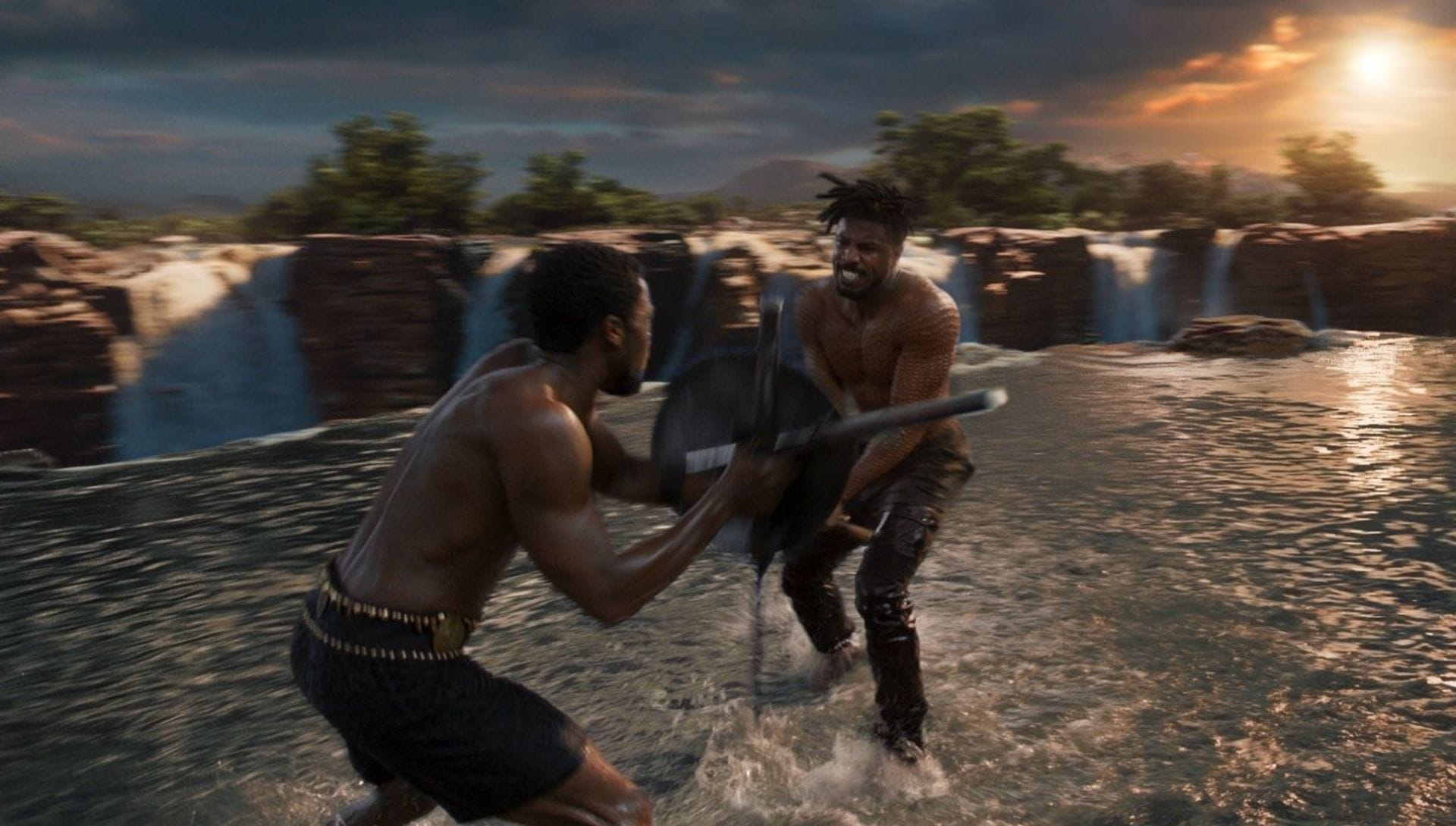
How much input did you have?
Bryan Grill
We had plenty of creative freedom on this project. We had a set, reference of how our environment was supposed to look, and we got the opportunity to put all the pieces together in the way we thought would work the best. To begin with, we got feedback in broad strokes, but it got more detailed throughout the process.
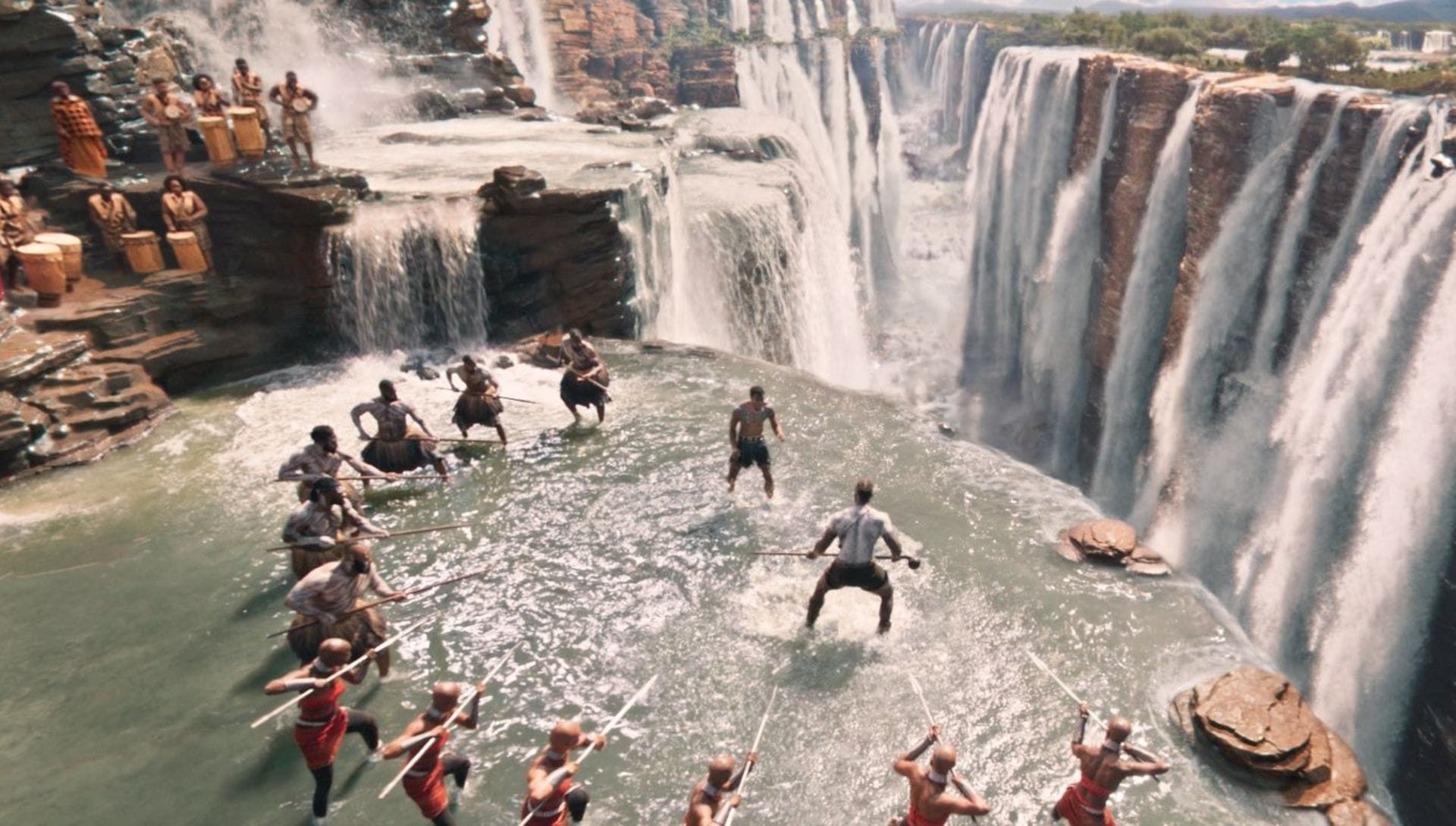
Uncharted waters: Simulating 100+ waterfalls for 200+ shots
Was there anything in this movie that you’d never done before?
Ioan Boieriu
We had two important features to solve from the beginning at both large and detailed scale levels. There were the large-scale elements, such as waterfalls, ponds, rivers, and atmospheric mists that the entire Warrior Waterfalls environment would need. Then there were the close-up pond simulations where each and every tiny detail is visible.
We started with the creation of the environment. We used a lot of references, and our matte painting team constructed some of our more important cameras with these elements. We worked based on the idea of parent/child shots, where the parent shot defines all the child shots looking in the same direction.
Based on these and photogrammetry, we created the first high-quality version of the environment and added some instanced elements for each waterfall or river. The next step was to show Marvel a flythrough camera that incorporated shots from the movie. This was our first big artistic input.
At the same time, as this artistic creation of the entire environment was fluid for a long time, for simulation purposes we had to come up with collision geometry shapes that helped create more dynamic and interesting shapes in our simulations. We used simplified shapes from photogrammetry extractions so they had a base in reality.
We ended up having 102 waterfalls, and server wise all the caches involved in this show occupied one petabyte.
Ioan Boieriu
We had to solve the logistics of rendering and simulating an initial estimate of 150 individual waterfalls for the environment. In order to control the waterfall, pond and river section visibility automatically we created a smart database called VisData which collected all the individual elements in the environment. This created a shot-by-shot list of the waterfalls that needed to be rendered, based on the 200-plus shots we had in the two Warrior Falls sequences. All that was controlled by another tool, Multishot, which populated each shot with the right waterfall and cache version. Once we had all the elements available with the click of a button, we could have potentially sent all the shots to render.
These tools allowed us to optimize our work and we ended up having 102 waterfalls. Server wise all the caches involved in this show occupied one petabyte!
We constantly introduce new features to our Flowline fluid simulation software, but Timesplit, which splits particle generation by time, made all of these huge simulations possible. It allowed us to simulate and render waterfalls at high-quality standards, with about one billion elements per waterfall.
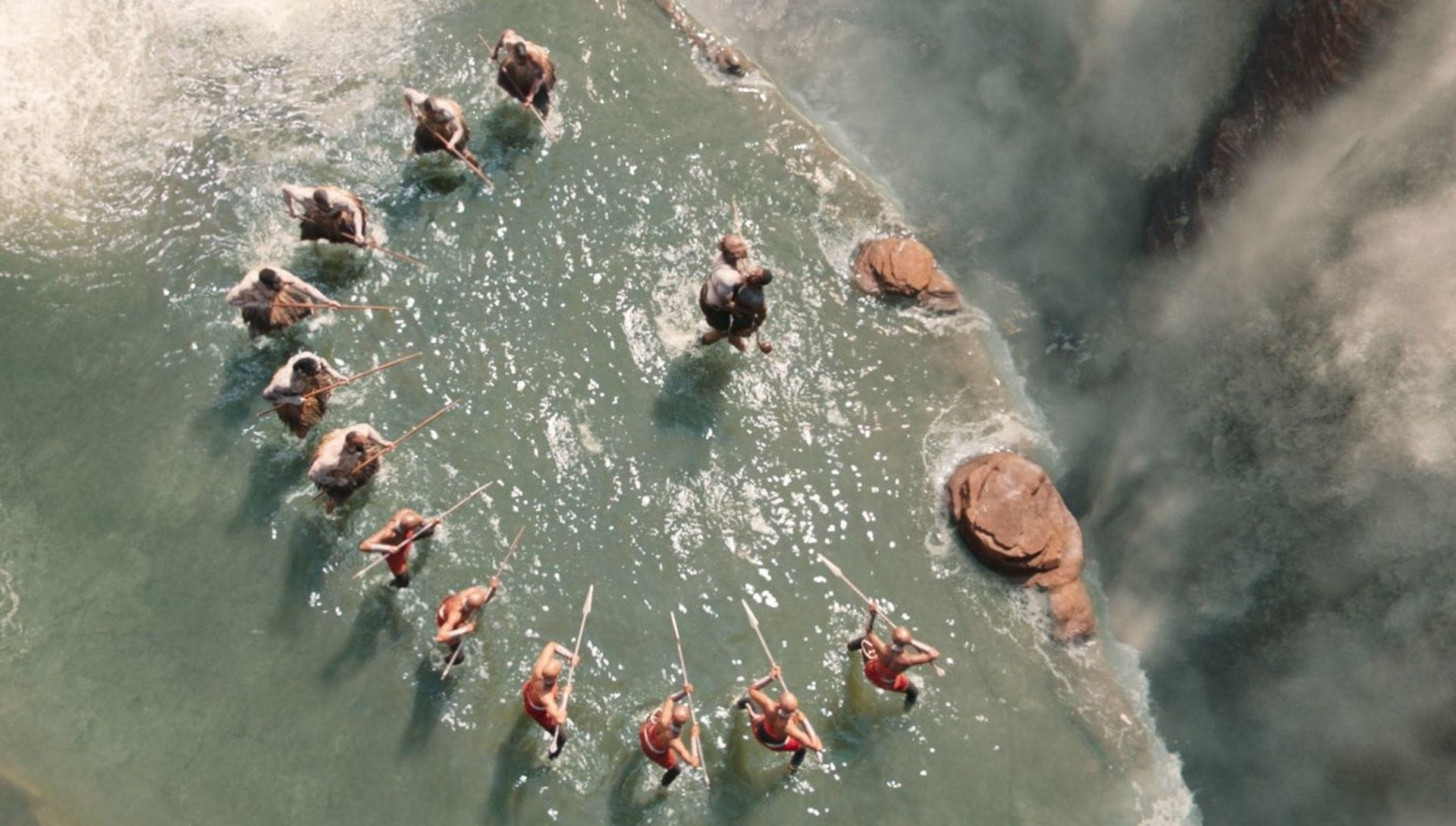
Did this movie’s effects build off work you’d done before?
Lukas Lepicovsky
The waterfall lookdev was developed in Flowline in tandem with Tomb Raider, which also had a large waterfall sequence. Our shading and rendering workflow built off our experience from our previous movies as we use V-Ray for 3ds Max for all our rendering.
How did you turn a pond into a waterfall?
Ioan Boieriu
The ponds had three different types of situations: waterfall shots, very close up detailed simulations and medium distance ones.
This required a simulation rig that allowed us to obtain a very realistic water look and flexibility in choosing the directionality and depth of the water. Early on in the game, we had some reference from the ponds, and we matched it to the level that you couldn't realize what was 3D or real. At that point we didn’t actually know that we would have to replace all the pond's water in the show. Later on as the artistic view of the director became more clear, we realized that we would need to put more work into the ponds.
Here we came up with an even more complex representation of the Multishot tool. We actually used it for simulation purposes for the 70 or so high-resolution pond shots, automatically replacing characters and their respective animation, cameras, simulation areas, and technical simulation details (voxel size, solver proprieties, velocities) in one single master file. In order to create close up details we made some tweaks in Flowline’s solver capabilities, and we had to introduce more details into secondary elements like realistic ripples from splashes. Once this file was set up, any feedback we needed to address would be easy to achieve.
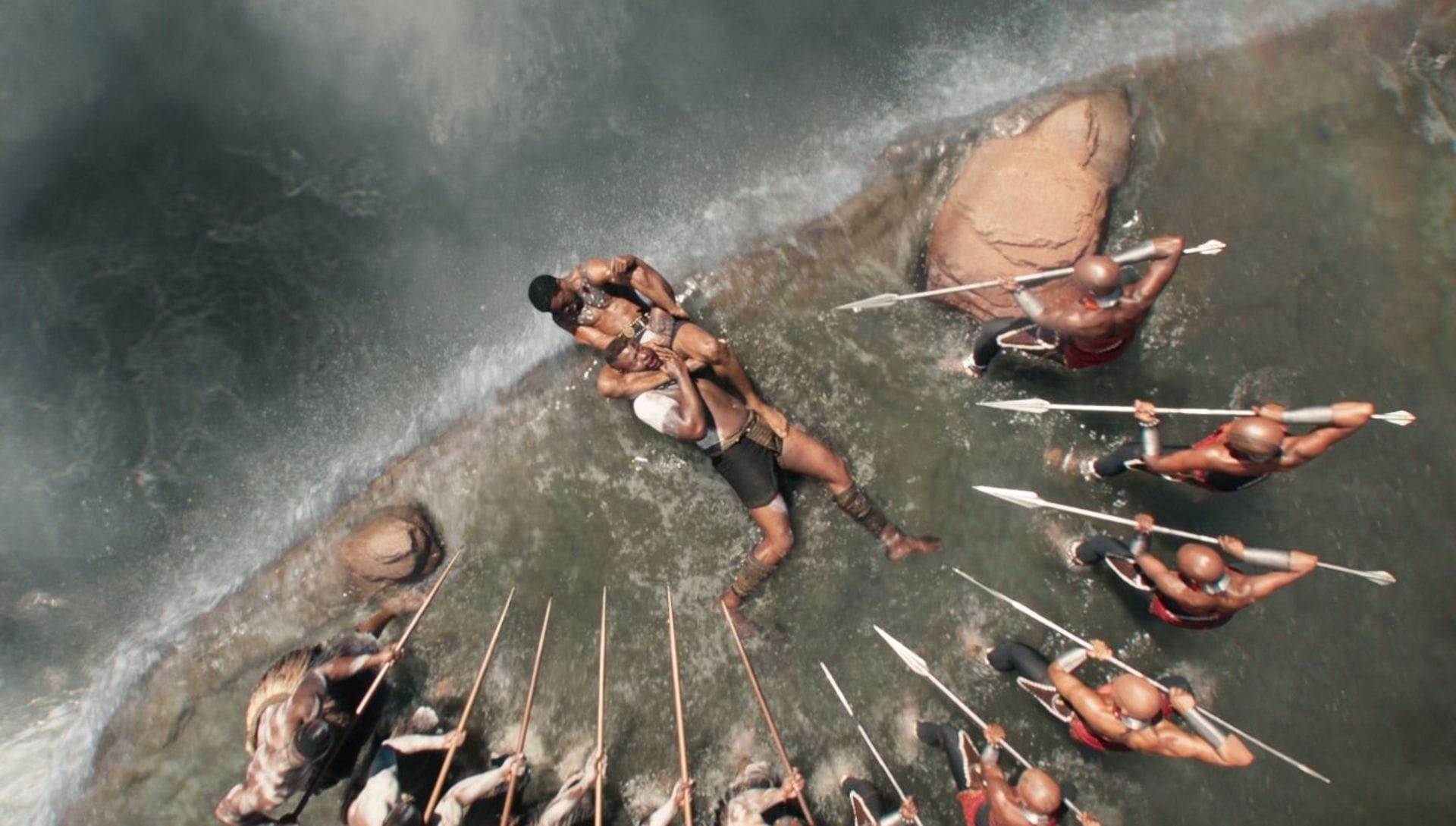
Did you make use of any new V-Ray features?
Lukas Lepicovsky
It’s more like which feature didn't we use!
We made extensive use of V-Ray instancing in combination with Forest Pack to distribute thousands of trees with little memory overhead. The new V-Ray Render Elements came in handy to give comp as much control as possible, especially the new deep render element.
The V-Ray HDRI loader with UDIMs was also used extensively, as we could just load the parts of the images we needed and keep the RAM usage under control.
Finally, we made use of the new V-Ray Sun and Sky models, as well as improvements to the V-Ray Material for lookdev.
What’s next?
Bryan Grill
This year we have some exciting projects we are honored to be a part of: Aquaman, Ant-Man and The Wasp, The Meg, Captain Marvel, and Game of Thrones.

